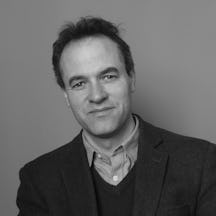For most of Western history, strong feelings of joy and sorrow, desire or hatred, hope and despair were thought of as “passions of the soul”. The powerful passions were distinguished from milder affections and sentiments, including familial love and compassion. Our modern category of ‘the emotions', is a much more recent invention. So how did we get from passions to emotions, and what difference has it made?
The word ‘emotion’ entered the English language from the French émotion in the 17th century. It meant a kind of physical agitation or commotion. So you might talk about the ‘emotion’ of a tree, meaning the wind was rustling its leaves, or a great ‘emotion’ among the people, meaning a public disturbance. ‘Emotion' only took on its modern, psychological meaning in the 19th century, as part of a self-consciously scientific approach to the mind.
The Scottish philosopher, who I think of as the inventor of the emotions, was Dr Thomas Brown, who died in 1820. Later pioneers, including Charles Darwin and William James, adopted Brown’s terminology and applied it to the new science of psychology.
Ever since then, scientists of the mind have tended to lump together all our feelings, sentiments, passions and affections in the capacious category of ‘the emotions’.
What difference has that made? There are two main legacies.
First, passions and affections were understood in moral terms – as good or evil. ‘The emotions', by contrast, were formed in a more secular and scientific spirit. They weren’t good or evil; they were inherited bodily inclinations – neither good nor bad in their own right, but just natural.
The second legacy is to do with the relationship between thinking and feeling. Earlier theories included categories that were both rational and emotional. So, for instance ‘affections’ and ‘sentiments’ combined reason with passion, light with heat.
The new category of ‘the emotions’, however, was from the outset starkly contrasted with the intellectual states of the mind. In this way, the contrast between the head and the heart became even more firmly entrenched.
So the next time you talk about experiencing an ‘emotion’, remember that people haven’t always talked, and written, this way.
Maybe what you’re feeling is a passion, or an affection, or a sentiment, instead?
